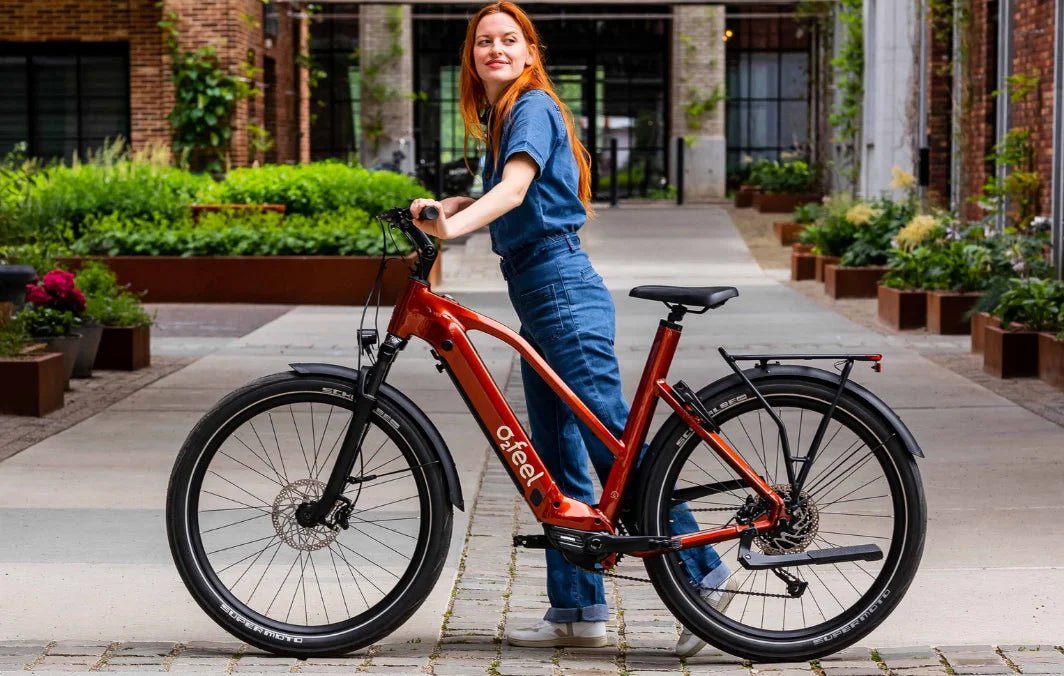This "eBike 101" provides a basic overview of electric bikes (e-bikes) and their key components:
What is an E-Bike?
An electric bike, or e-bike, is a bicycle equipped with an electric motor and a battery that provides varying levels of assistance to the rider's pedaling effort. E-bikes are designed to make cycling easier, especially on hills or longer distances, and they come in various styles and configurations.
Types of E-Bikes:
- Pedal Assist (Pedelec) E-Bikes: These bikes provide assistance when you pedal, and the level of assistance can usually be adjusted. The motor doesn't operate without pedaling. There are various levels of pedal assistance to choose from.
- Throttle-Controlled E-Bikes: These bikes have a throttle, similar to a motorcycle, which can be used to control the motor's power independently of pedaling. They provide instant power with or without pedaling. At Dutch Cargo we do not have any bikes with a throttle.
- Classifications: E-bikes are classified based on their power and speed capabilities. The three main classes are Class 1 (pedal assist, max speed usually 20 mph), Class 2 (throttle and/or pedal assist, max speed 20 mph), and Class 3 (pedal assist, max speed usually 28 mph).
Components of E-Bikes:
- Battery: E-bikes are powered by rechargeable lithium-ion batteries. Battery capacity affects the bike's range, which is the distance it can travel on a single charge.
- Motor: The motor provides assistance to your pedaling. It's usually located in the hub of the wheel (hub motor) or near the bike's bottom bracket (mid-drive motor).
- Controller: This device manages the interaction between the battery, motor, and user inputs. It controls the level of assistance and may have a display screen.
- Display/Console: Many e-bikes have a display mounted on the handlebars. It shows information like speed, distance, battery level, and the selected assistance level.
- Pedal Sensor: This sensor detects your pedaling motion and sends signals to the motor to provide assistance. It ensures a smooth and responsive riding experience.
- Throttle (if applicable): Throttle-controlled e-bikes have a throttle on the handlebars that you can use to control the motor's power without pedaling.
Benefits of E-Bikes:
- Assistance: E-bikes make riding easier, particularly on hills and long distances.
- Eco-Friendly: E-bikes are more energy-efficient and emit fewer pollutants compared to cars.
- Health Benefits: You still get exercise while riding an e-bike, but with less strain.
- Commute Alternative: E-bikes are an efficient and eco-friendly mode of transportation, often faster than cars in urban traffic.
- Adventure and Exploration: E-bikes extend your range, enabling you to explore new areas.
Considerations:
- Cost: E-bikes can be more expensive than traditional bicycles due to their motor and battery.
- Weight: E-bikes are heavier due to the motor and battery, which might affect handling and transport.
- Regulations: E-bike regulations vary by location, in Australia the Eassist needs to stop 'helping' after 25/km/h and can have a max of 250W motor. Some states allow a throttle, some don't. The age you can ride an ebike is between 12 and 16, depending on what state.
E-bikes offer a versatile and convenient way to get around while enjoying the benefits of cycling. Understanding their components, types, and benefits can help you make an informed decision when considering an e-bike purchase.
Learn more about e(cargo) bikes in this video:
